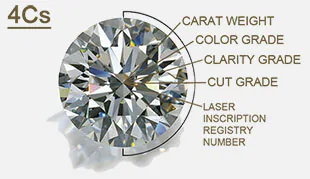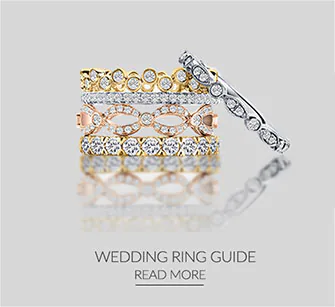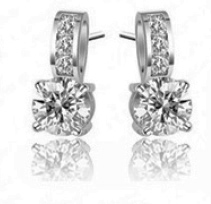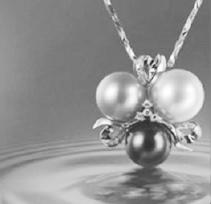RINGS
EDUCATION
Thousands of couples around the world have trusted us with their most important moments. With the largest selection of diamonds and meticulously designed, handcrafted rings, were here to help you find your way to the perfect ring.
DIAMOND
EDUCATION
For most people, buying a diamond is a new experience, but that doesn't mean it should be overwhelming. Understanding a diamond's quality characteristics is straightforward and simple.
Our diamond education is designed to answer all your questions. In just a few minutes you'll know everything you need to know to find your perfect diamond.
JEWELLERY
EDUCATION
it is our mission to take the mystery out of your purchase by offering only the finest quality fine jewellery available, along with expert guidance and education. Our jewellery is crafted with superior materials and inspected against exceptional quality standards.
PEARL
EDUCATION
Use this guide to find the pearl that is right for you by educating yourself on the quality and value of the cultured pearls that we offer.
GEMSTONE
EDUCATION
Gemstones and rare minerals can evoke strong emotions and spur intrigue. While most loose gemstones and minerals are purchased for ornamental jewellery purposes, others are possessed for their fascinating attributes. Natural gemstones and minerals add sparkle to our lives and invigorate our soul with the earth's natural beauty.
Gold
Gold has an extraordinary heritage with unique qualities. As an enduring element found naturally in a distinct yellow colour, gold is resistant to rust, tarnish, and corrosion. Although gold is very strong, it's also the most malleable of all precious metals.
Purity
Pure gold is too soft for everyday wear, so it is alloyed with a mixture of metals like silver, copper, nickel, and zinc to give it strength and durability. Karatage, denoted by a number followed by "k" indicates purity, or how much of the metal in a piece of jewellery is gold. Karatage is expressed in 24ths, making 24k gold, 100% gold.
- 24 karat = 100% gold
Too soft for fine jewellery
- 22 karat = 91.7% gold
Too soft for fine jewellery
- 18 karat = 75.0% gold
Ideal for fine jewellery
- 14 karat = 58.3% gold
Ideal for fine jewellery
- 10 karat = 41.7% gold
Not acceptable for jewellery
We craft our jewellery using both 18k and 14k gold. 18k gold is composed of 75% gold, which is alloyed with other metals to make it strong enough for everyday wear. 14k gold is composed of 58.3% gold and 41.7% of other metals.
Colour
The colour of gold is determined by two factors:
- The type of metal alloys included
- The percentage of each metal alloy
Yellow Gold
Natural gold and colour-saturated alloys are what give yellow gold jewellery its rich shine. The alloys most commonly used, are copper with a red hue, and silver featuring a green hue. An expert mixture of copper, silver and pure gold gives this precious metal its signature warmth.
White Gold
A silvery white character is what makes white gold jewellery so appealing. In order to make the gold white, it is combined with metal alloys that are white in nature and plated with an extremely hard element called rhodium. Although strong, rhodium may wear away over time. Replating is a simple process that can be done to restore whiteness to your jewellery.
White Gold With Black Rhodium
Black rhodium is plated to white gold creating a rich black appearance that is extremely hard and strong. As with traditional white rhodium, black rhodium may wear away over time. Replating is a simple process that Fonder Diamond offers to restore your jewellery's black finish.
Rose Gold
The beautiful pink hue of rose gold jewellery is created by using a copper alloy. Again, the overall percentages of metal alloys is the same for rose gold as it is for yellow or white, there is just a different mixture in what alloys are used.
Vermeil
Rich in golden colour, many of our fine jewellery pieces are crafted with vermeil. The industry standard definition of vermeil is sterling silver that is plated with 10k gold with a minimum of 2.5 microns in thickness for longwearing durability. At Fonder Diamond, we strive to offer a higher quality to our customers. Our vermeil pieces feature 14k to 24k gold.
Pricing
Gold jewellery prices are dependent upon the purity of the gold used or karat weight, the market value of gold, and the level of craftsmanship and design of each jewellery piece.
Care
Since gold is a natural element, it is affected by harsh chemicals such as chlorine or other cleaning products. We recommend that you remove your jewellery when using chemicals to reduce daily abrasions and prolong the lustre. To clean gold jewellery, use a solution of warm water and detergent-free soap with a soft-bristled brush. When not worn, store your gold pieces in soft cloth bags or the original box to protect them from the elements of daily exposure.





















